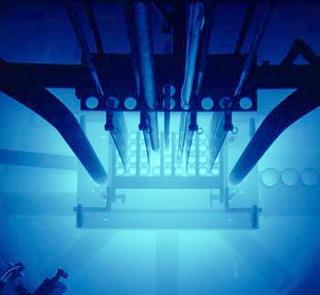 An ABC News report has spurred the Nuclear Reglatory Commission to investigate at least five US colleges and universities. ABC looked at nuclear reactors set up on 25 college campuses and found lax security around many of them. The reports showed it could be easy for terrorists to gain access and use explosives to turn the reactors into "dirty bombs."
An ABC News report has spurred the Nuclear Reglatory Commission to investigate at least five US colleges and universities. ABC looked at nuclear reactors set up on 25 college campuses and found lax security around many of them. The reports showed it could be easy for terrorists to gain access and use explosives to turn the reactors into "dirty bombs."None of the reactors had metal detectors and only two had armed guards. (ABC)
5 comments:
What exactly would metal detectors do? A gun can't do a thing to a tiny reactor.
It would detect wiring for a bomb. And a gun could be used to hold off campus cops until it's place and detonated.
just what exactly would a bomb do?
some things to keep in mind are:
• The reactor’s core is quite small, about the size of a dormitory refrigerator, and is fully enclosed in a radiation shielded structure consisting of several feet of concrete and other materials, which itself is housed within the containment building comprising different layers of concrete and steel, all of which would be nearly impossible to breach at one time.
• Fresh fuel is not stored in the facility and is never present in large enough quantities to create a nuclear weapon.
• At 5 megawatts, a typical research facility is 1/600 the size of a typical nuclear power plant in the U.S. It operates at only 130 degrees Fahrenheit—well below the boiling point for water—and at atmospheric pressure, and hence has no stored energy that could cause a release of radioactive material. (Power plants operate at about 600 degrees and at a pressure of 2,200 psi, about 150 times atmospheric pressure.)
• The MIT reactor, for example, is refueled on a just-in-time basis so that the inventory of fresh fuel is usually zero and is never enough to make a nuclear weapon. Once placed in the reactor, the fuel becomes so radioactive that it could not be handled without dense, massive shielding that would require a large truck to move.
The discussion seems to be split between the anti-nukes and the pro-nukes. As a result, some salient points are getting lost in the shuffle:
1. Throwing a bomb into a reseach reactor filled with water would not produce a dirty bomb. If you doubt that, place a steel box full of lead pellets in the bottom of a 30-foot-deep hole filled with water. Then drop a bomb into the water. You pick the bomb. When she blows, a lot of water will spray around, but you won't see any lead flying around. Uranium is denser than lead. And the fuel is encased in thick steel structures. So the dirty bomb scenario is bogus.
2. The entire point is that the American people do not want anyone to ever be able to even get close enough to ANY QUANTIFY of nuclear fuel to be able to blow anything up. The fact that students with unchecked backpacks were even in the corridor outside a reactor is the real issue here. How much of a nuclear emergency they could create is beside the point. If a truck bomb could be placed close enough to even a small reactor to blow away the reactor building, public confidence would be badly shaken, if not shattered. ABC did the nuclear industry a favor by pointing out the stupid holes before someone with a real bomb pointed it out.
This has nothing to do with the nuclear
industry - you can't get close to a power
reactor. This has to do with university
research reactors.
MIT doesn't have control over the area
surrounding the reactor. Those are public
roads. MIT can't prevent the attack.
MIT can only make sure the reactor survives.
Scienctific studies show that a truck bomb
CAN'T blow away the reactor building or
damage it to a degree that the public
would be threatened.
http://web.mit.edu/newsoffice/2005/reactor.html
ABC should have researched this better.
Post a Comment